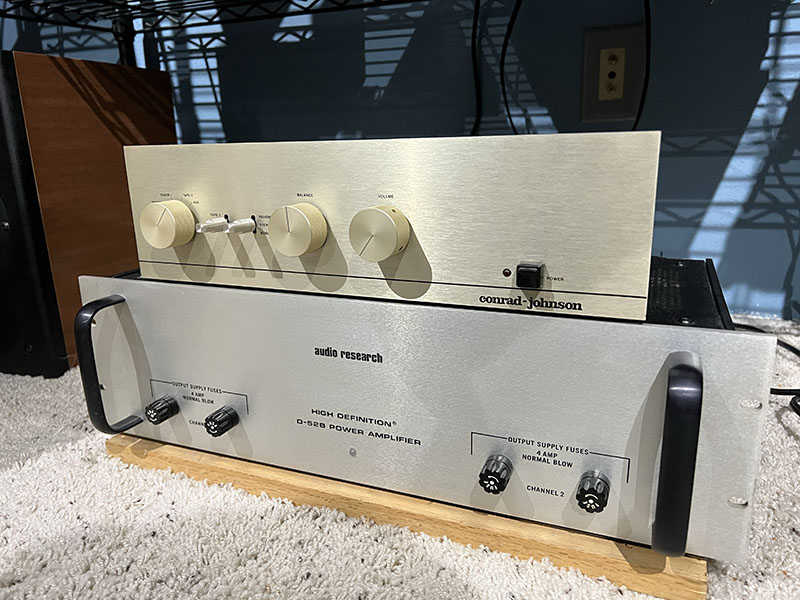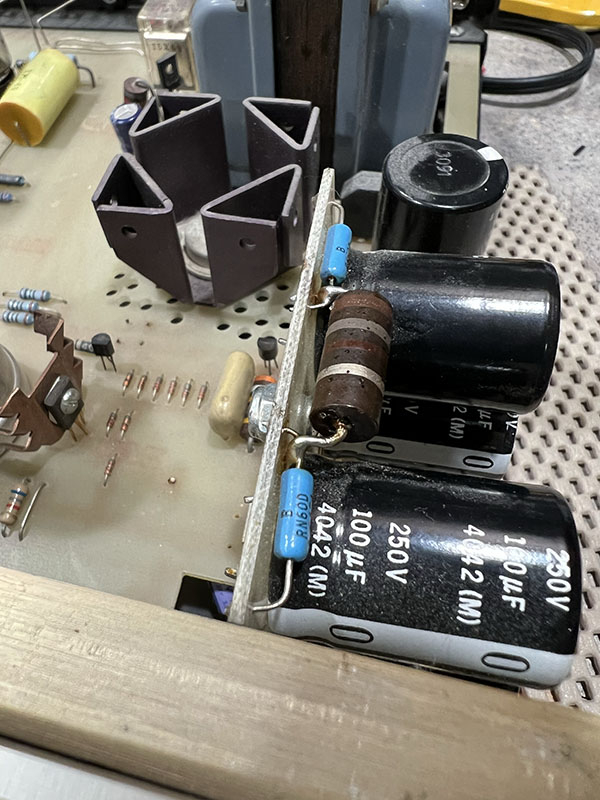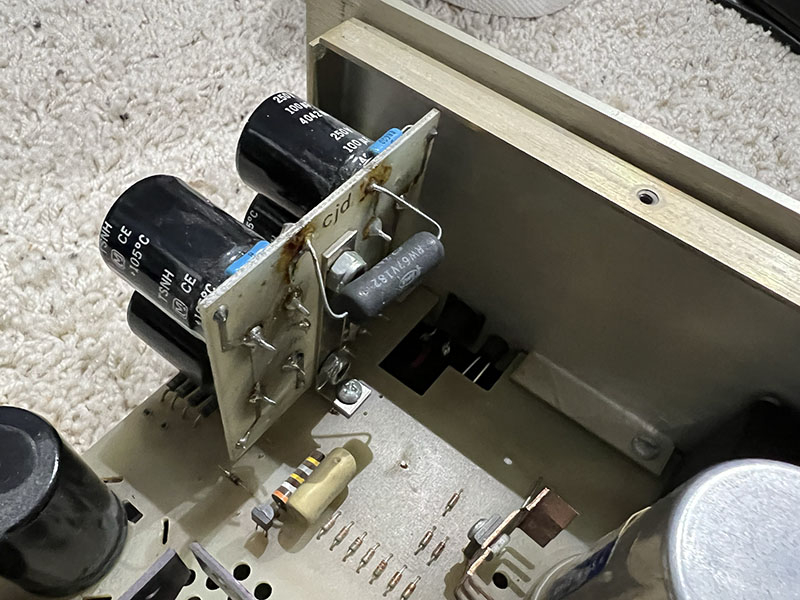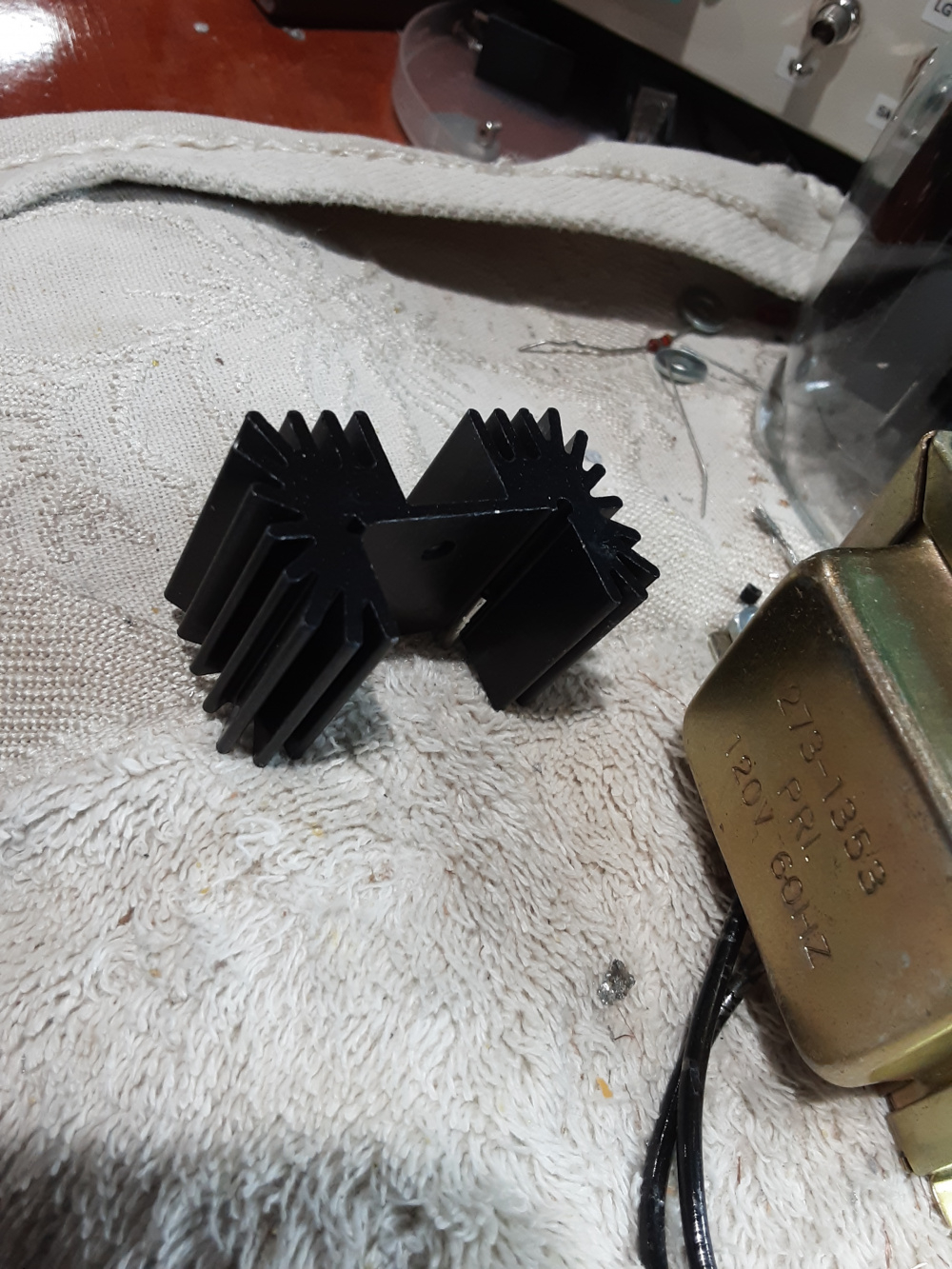Site Links
Howdy, Stranger!
It looks like you're new here. If you want to get involved, click one of these buttons!
Quick Links
Categories
Who's Online (0)
C J preamp surprise.
I've been in an analog mood lately, so I've been rotating through my vintage gear. Swapping out electronics and cartridges. I popped my old Conrad Johnson PV2a into the system - the phono preamp in that one really sounds sweet.

At least it did for a few hours. It had that old tube gear smell, but a little more pungent than what I would consider normal. Then it just went silent. I popped the hood thinking I may have lost a tube, but instead I found a resistor rolling around!

But where did it come from? There were no obvious empty holes to be found. The schematics online are mostly for the wrong unit. Most show 4 tubes, the PV2 has 6. I finally found the right one, but it was for the PV2, not the PV2a, which was a factory upgrade. After poking around with the meter, pulling and checking the transistors and diodes in the power supply, I was left scratching my head and put it aside for the night. Then I went looking on eBay to see what these were going for these days. The prices are CRAZY! But I eventually stumbled onto a photo that shows that same resistor on the backside of the factory added vertical cap board. So I can only assume mine was just soldered onto the traces with nothing supporting it. It's an 1.8K 2 watt carbon comp and way out of spec at 1100 ohms. It had been working, so I hooked over some other leads on the other side of the board and soldered it up.

But wait! The drop across it showed it was dissipating 2.45 watts. I'll bet it was running pretty hot. I ended up replacing it with a 7 watt Dale to be safe. And I ran the leads through the holes in the board!

Considering this piece was at least the entry point in audiophile gear back then, these factory upgrades look really sketchy. And I'm very surprised they just tacked an underrated resistor in there. Must have been a Friday at 4:00 job.

Comments
More likely it was under Jimmy Carter and they couldn't source the appropriate parts. Kinda like today.
You did really well in your diagnosis - does it function well again?
I'm not sure it had anything to do with finding the right parts. The whole "upgrade" looks sketchy underneath.
Traces cut, flux not cleaned off the board, etc. Thankfully, it's up and running just fine again. I was worried at first when one of the transistors in the PS regulation circuit was running at around 200 degrees where it contacts the heatsink. I checked the data sheet and they are fine up to 300.
Was this all done at the factory? You'd think that they would at least take the time to clean the flux off.
I bought it used, but it doesn't look like any parts have been replaced. Maybe mine was upgraded by a new employee or an intern. I haven't seen any other pictures of the bottom of the boards, but I really haven't been looking to find any.
Good to see that you got it working again. Another vintage classic saved! Just to be on the save side, I'd pull the T0-3 package transistor, clean it, and install new heat sink grease. Unless you are referring to a different PS transistor.
The TO-3 seems to be fine, but I might do that just as a little preventative maintenance. I think those are now NLA. It's the MJE340 in the TO-225 case with the copper finned heatsink that's running right around 200 degrees. I haven't checked it since installing the new dropping resistor, but I might get a few spares with my next big Mouser order. Every other part can be sourced without much trouble.
Tom just a though, maybe get a heatsink with more surface area for the MJE340. As you noted, really sloppy work for a factory job. Classic CJ gear has a warm, smooth sound, so I don't know if you want to mess with it, but you could swap out the ceramic and carbon resistors for some low ppm Dale RN series and lower the distortion slightly, especially if any are in the feedback.
I'm not sure what types of resistors are in the signal path. Not the old brown AB carbons, thankfully! They look like the mil-spec stuff I used to find at the surplus store. But yeah, I'm not inclined to swap anything out that's not faulty for fear of losing the original sonic signature.
Looks like you have been "tube rolling" the 12AX7, as that is the only tube that appears "dust free" on top. Would that one be first tube in the phono stage?
Looks like they used polystyrene RIAA caps. Can you still get these type of caps? I have yet to tackle the phono stage on my Stromberg and I am considerling the use of polystyrenes for equalization.
Ordered some small polystyrene from Mouser for one of the tube projects.
I think all the tubes have been in there for probably 10 years. The tubes included were not in great shape, so I replaced them all with these good used & NOS tubes. All three on the left are for the phono stage. I probably brushed that one with my sleeve. I did replace that Sylvania 12AT7 in the line stage for another Telefunken last night. The first Tele I tried was very noisy. I always cringe pitching a nice looking vintage Euro tube in the trash can, but it had seen better days.
I think Mouser still has some polystyrene caps in stock. Do they drift or leak with age?
Not sure about that, have to do some checking. I know they melt easily, you have to be very careful when soldering (heat sink required). Thanks for the Mouser tip, will check that out.
I pulled a 40 year old Mallory Polystyrene 2.5% .056mf cap out of my stash and it measures dead on. Polystyrene and Tantalum caps reportedly have very long shelf lives as long as they're stored properly.
Ron
Good to know. One less thing to worry about. Thanks Ron!